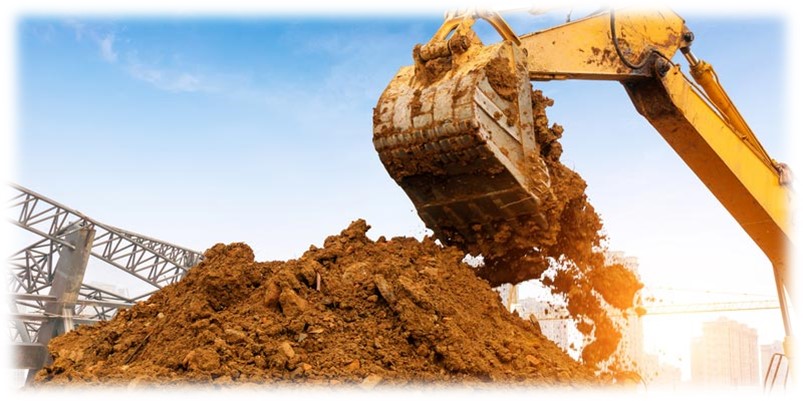Construction process including:
Clearing and Excavation

The area on which the road is going to be built on must be cleared of all vegetation, which requires the removal of trees, shrubs and bushes. Excavation vehicles will also dig up and remove rocks and stones from the future road's pathway. To prevent the cleared land from erosion, control devices, including fences, ditches and basins are installed.
Fine Grading

The road takes shape as diggers, excavation plant machinery and bulldozers mount dirt and soil over the area where the future pathway will run. The surface is then leveled and smoothed by graders. Culverts and drains, consisting of large concrete pipes, are laid to prevent the road from flooding by leading away groundwater, sewage or stormwater.
Aggregate Base

After another grading of the surface, the aggregate base course is laid. Aggregate base is made of crushed stone or gravel, and it is placed evenly on the road surface. If the road is in a town or city, a curb for the pavement and the gutter will be constructed straight after the gravel is placed on the surface. The road is then fine graded again.
Asphalt Paving

Once the gravel has been distributed evenly, the asphalt can be poured. Asphalt is a mixture of a petroleum byproduct, an aggregate base material and a sticky, gluelike substance called bitumen. Depending on the expected traffic on the road, up to four layers of asphalt can be placed on top of each other. The asphalt usually is produced and mixed in large plants after the engineer's specifications. The hot asphalt is filled into trucks that transport the material to the construction site where it will be poured immediately. Before the last layer of asphalt is poured, the sidewalks and gutters have to be finished. The construction work is concluded by placing the appropriate road signs at the places specified by planners and the application of road markings.